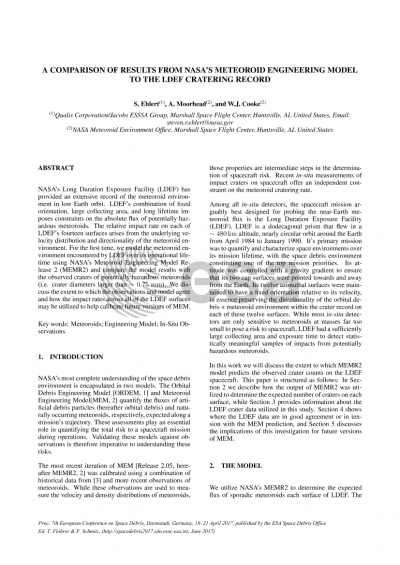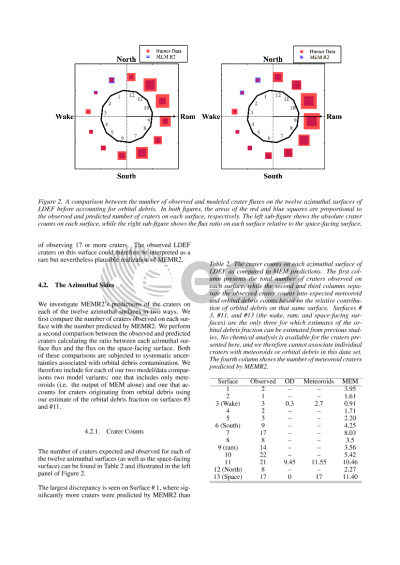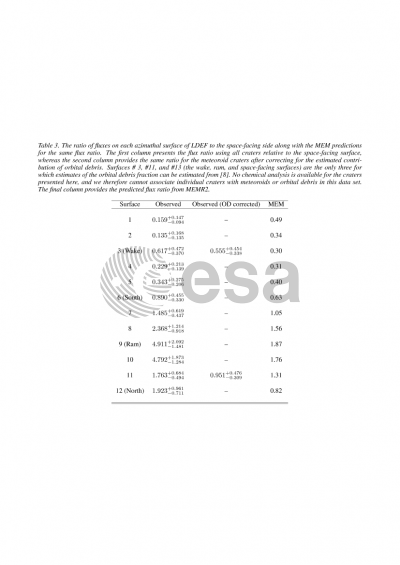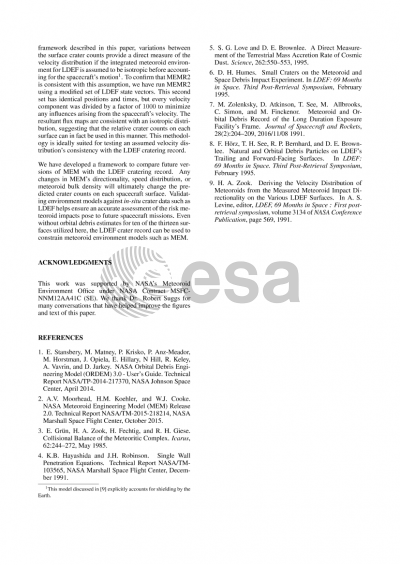Document details

Abstract
NASA's Long Duration Exposure Facility (LDEF) has provided an extensive record of the meteoroid environment in Low Earth Orbit. LDEF's combination of fixed orientation, large collecting area, and long lifetime imposes constraints on the absolute flux of potentially hazardous meteoroids. The relative impact rate on each of LDEF's fourteen surfaces arises from the underlying velocity distribution and directionality of the meteoroid environment. For the first time, we model the meteoroid environment encountered by LDEF over its operational lifetime using NASA's Meteoroid Engineering Model Release 2 (MEMR2) and compare the model results with the observed craters of potentially hazardous meteoroids (i.e. crater diameters larger than 0.75 mm). We discuss the extent to which the observations and model agree and how the impact rates across all of the LDEF surfaces may suggest improvements to the underlying assumptions that go into future versions of MEM.
Preview








